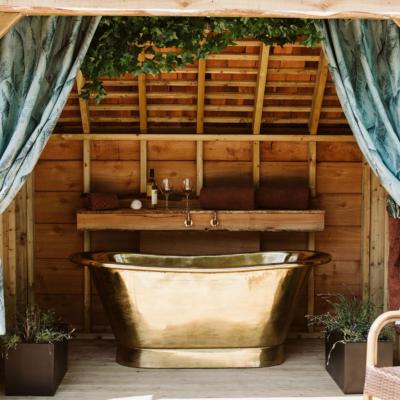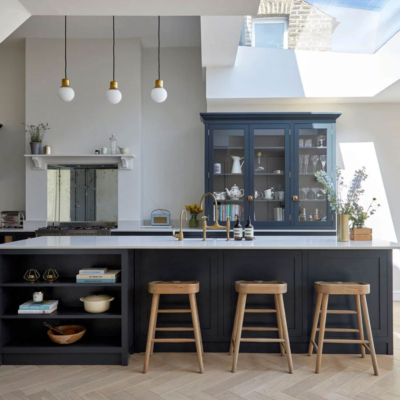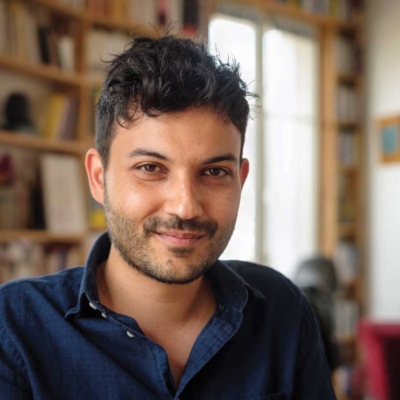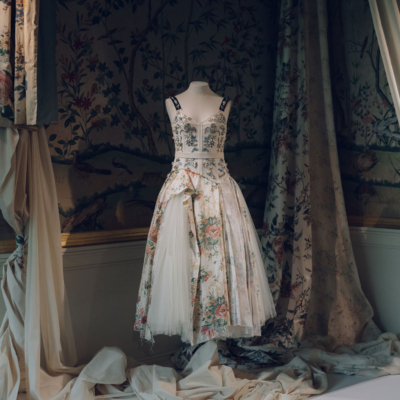Pot by pot, bowl by bowl, Florence St George discovered pottery is the perfect antidote to internet overload, and that creativity doesn’t have to be expensive …
Main Image; Florence St George
Antony Gormley, the artist best known for his giant cast-iron Angel of the North, arranges clay get-togethers, where he has friends over for dinner and gives them all some clay to play with afterwards.
As soon as I heard about these dinners, I knew I wanted to do the same. I invited twelve of my girlfriends over for lunch. After pudding, I presented them all with a ball of clay wrapped in pink tissue paper. I watched intently as my guests unravelled the clay from the paper to see how they’d react. Some of them got stuck in straight away and made something with complete confidence. Others paused and watched, waiting to take their cue. When they got going, they made the most beautiful things: decorations, little trinket pots and spoons. I think we all got something special out of that dinner.
I’d love to be a fly on the wall at one of Gormley’s clay dinner parties, to see what he inspires his guests to come up with. This idea of working together in groups is something he understands well because he did it years ago, for another famous installation, the “Field” sculptures, when he started playing with the concept of making thousands of small terracotta figures in towns around the world – from Porto Velho in Brazil to St Helens in the UK, with a band of volunteers from each local area.
The process was always the same: participants were given a board with a lump of clay, a jar of water and a pencil and they were asked to make a sculpture of a person measuring between eight and 25cm. The instructions were simple – the head and body were to be of similar proportions and they should use the pencil to make the eyes – but apart from that they could make the figure however they wanted. Gormley meant the process to feel meditative and collaboration was important to the theme of the work. My own road to making pottery really did start small. I bought little bags of air-dry clay off the internet and made my first pots on a tray sitting in front of the TV. Then, I set up in the kitchen using spoons and various other utensils as my tools. When I was pregnant with my second child, I enrolled myself on a short course at Central Saint Martins in London. This was my first time in a proper pottery studio and it was here that I slowly got used to the processes – I learned how to wedge the clay into shape, I experimented with the tools and soon found my favourites.
I also started chatting with some of the other aspiring potters. Everybody had their own reasons for being there. Some were fed up with their jobs and testing the water, trying to find out whether ceramics was their bag. By this time, I was getting serious about pottery so this course felt like a stepping stone to future things.
“It’s a very odd thing, clay. People often say they feel like they’ve been in a spa for a full day.” Louise Ogden
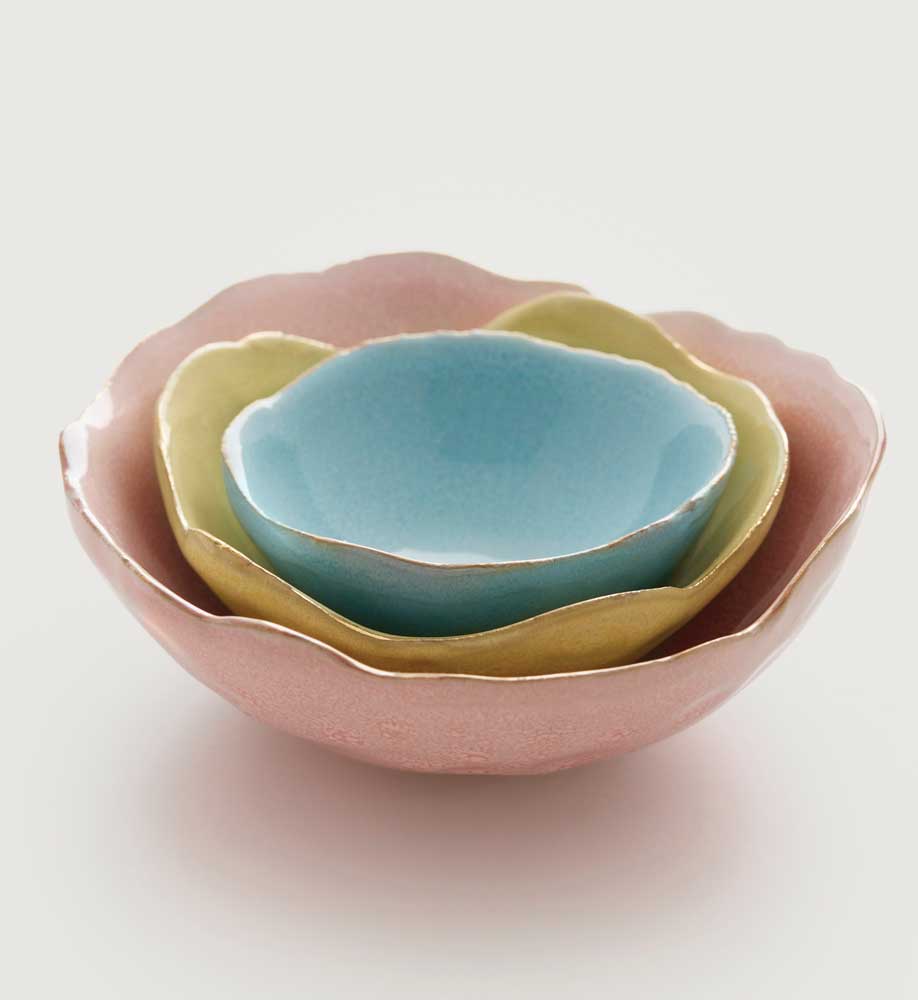
Florence St George X Monica Vinader.
I recognised my new hobby was making me feel better too. It wasn’t just the act of wedging, moulding and throwing clay that was healing me. Being out of the house was good too. Clay had captured me but so had that connection I felt with those other students. Canadian psychologist and TED talker Susan Pinker has compared brain scans of two groups of volunteers: the first engaged in face-to-face contact and the second watching videos of other people talking, and discovered that the people who were interacting in the flesh showed more activity in the areas of their brains involved with social intelligence and emotional reward. “Building in-person interactions into our cities, into our workplaces, into our agendas, bolsters our immune system,” she says, “sends positive hormones surging through our bloodstream and brain and helps us live longer.”
I experienced that surge of positivity for myself on countless occasions. Back in those early days at St Martins, I remember often feeling tired as I entered the studio, but then I would lose myself in the pots and being around the other students. The hours flew and by the time we were packing up, I would feel energised and inspired. As I looked around, I could see the same uplift in the eyes of the others. Louise Ogden, a potter who runs Kiln, a studio in Bristol, adds that the time spent away from our phones is another key benefit: “It’s such an antidote to the technological onslaught that has become the norm. It’s a very odd thing, clay. People often say they feel like they’ve been in a spa for a full day.”





